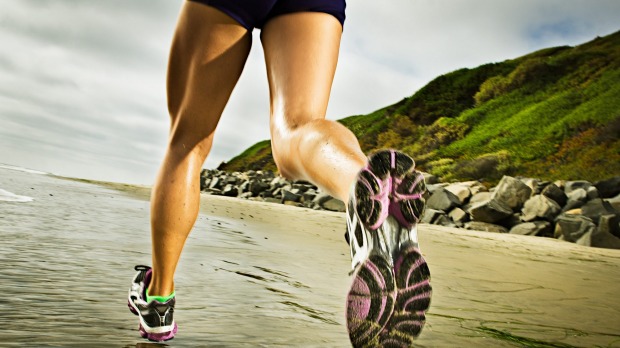
Good for joints: A new US study found that runners had less knee pain and osteoarthritis. Photo: Getty Images
It’s official: not only does running not cause osteoarthritis in the knee, it may even help to keep the problem at bay. That’s the verdict from a new US study from Baylor University that looked at data from 2863 people and found that runners, regardless of the age they were when they ran, had less knee pain and osteoarthritis.
The findings, presented at the American College of Rheumatology annual meeting in November, add to growing evidence that running isn’t the arch-enemy of knees it’s made out to be – providing knees have no pre-existing problems. One large study of more than 74,000 US runners reported last year, for example, found that running significantly reduced the risk of both osteoarthritis and knee replacement.
This is no surprise to Rob Newton, professor of exercise and sports science at Perth’s Edith Cowan University.
“A knee’s worst enemy isn’t going for a run – it’s the couch and the TV remote. One of the strongest risk factors for osteoarthritis in the knee is being overweight. If only we had more people running there would be less knee osteoarthritis,” he says. “Running may also be protective because it helps to keep the joint mobile and reduces systemic inflammation as well as helping to keep weight off.”
Too many surplus kilos can mount an attack on knees in multiple ways, Newton says.
Not only does excess weight impose an extra load on the knee, increasing wear and tear on the cartilage but it can also alter the biomechanics of the legs, causing misalignment of the knees. But the problems don’t end there. With overweight and obesity, excessive fatty tissue produces chemicals called adipokines that attack the cartilage, damaging the knee from the inside. On top of that, obesity can compromise the immune system, reducing its ability to repair and maintain the cartilage.
Compounding all this is the loss of muscle mass that comes with inactivity – and muscle is more important to our knees that you might think. It’s not just that strong leg muscles help support and protect the joints, reducing the risk of osteoarthritis, Newton says, but also that muscle is an important source of protective chemicals called myokines that produce positive changes in all tissues in the body including cartilage and bone.
But if running can be so knee-friendly, why is the idea that running can damage knees so deeply entrenched?
“It’s mainly because some earlier research focused on knee osteoarthritis in elite athletes who’ve done an enormous amount of running over a lifetime and have developed problems with their knees. But these are Olympic level runners – I’d say that even recreational marathon running is unlikely to increase the risk of knee problems,” Newton says.
“But when people such as footballers or basketball players – or runners – do develop knee osteoarthritis it’s often because they have a genetic predisposition or a biomechanical problem that affects their running gait and can put the knee at risk.”
If you do want to give running a go, it’s important to wear good running shoes that provide sufficient cushioning and support to reduce the risk of injury generally, including knee injury, he adds.
“If you have any problems with your lower limbs such as hip, knee, shin, ankle or foot pain, it’s wise to get a podiatrist or physiotherapist to check your legs and gait to make sure that there’s no problem with the alignment of the joints or any muscle imbalances that might increase the risk of a problem with your knees.”
